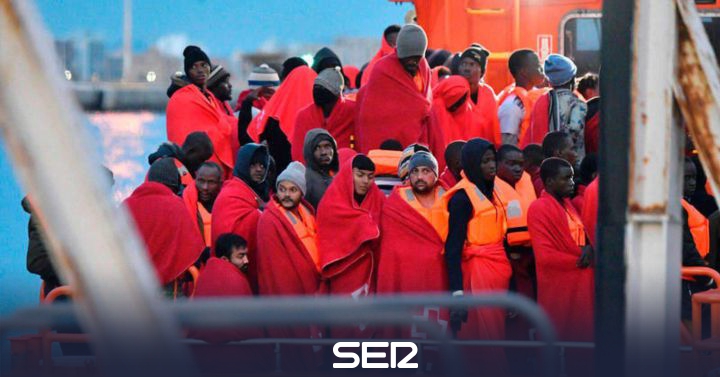The Canarian migration route, one of the most deadly and dangerous, has been reactivated in recent months. The state of alarm, far from appeasing the arrivals of irregular vessels to the Archipelago, has not prevented more than 1,200 people from reaching its shores. This represents 450% more than in the same period of 2019 and places the Canary Islands within five boats to match those received in the entire previous year. But behind these figures are the invisible ones, the ones that cannot be counted and that belong to those who swallow the sea. In 2019, as far as it is known, 229 people died trying to reach the Islands by boat. And of those, 149, their bodies were never rescued.
The NGOs warn that among the main causes That explain this reactivation is the increase in pressure in the Strait area that diverts routes to other more dangerous such as the Canary Islands and also the dismantling that is undergoing Maritime Rescue, those who are in charge of going out to the rescue of the occupants of these boats.
The latter is endorsed by the Secretary of organization of the Sea and Port sector of the General Labor Confederation (CGT), Ismael Furió. It assures that, after reaching an agreement with the Ministry of Development, all the reinforcements of all the Salvamares and this translates to “There is only one rescuer on deck to pull 80 or 100 people out of a pneumatic and lift them freehand” to these rapid intervention boats.
In the Islands right now they operate 10 Salvamares, four in the province of Las Palmas and the rest in Santa Cruz de Tenerife. Each one has three crew members per service and without any reinforcement after only a few months ago they were dispensed with in the Menkalinan, in Arguineguín (Gran Canaria) and in the Al Nair, in Arrecife (Lanzarote). According to Furió, in each rescue that right now is carried out in the Islands A skipper, a mechanic, and a sailor or rescuer whose average age is around 40 years old aboard these boats. For the secretary of organization of CGT, at a time when the Atlantic route is increasingly alive, it would be necessary, “at least, doubling the staff “but” not interested.
“We must renew because we have had a zero replacement rate since 2012 and many have retired in a service that is active 24 hours a day throughout the year,” denounces Furió, who has been rescuing migrants from the sea for more than 13 years. He experienced first-hand the so-called cayuco crisis of 2006.
He also adds that these hires are even more necessary in the Canary Islands, since rescues in their waters have nothing to do with those of the Strait. He asserts that the operations are more complex because they are longer distances, they do not follow the conditions of the sea and sometimes he spends whole days trying to locate a boat. And he points out that there are really critical points such as the piece of water known as El Río that connects Lanzarote with La Graciosa.
For Furió, This job insecurity responds to the fact that Fomento “is trying to turn the service into something that does not work to militarize it with the European Frontex, which costs like 100 times more.
–


